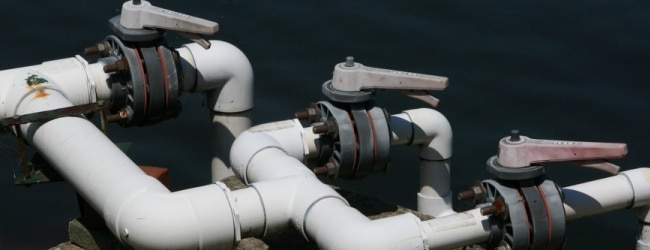Unfortunately, purified proteins must be dissolved in a buffer solution when we experiment on them, and the buffer should keep them stable and active. This is the source of many headaches for protein scientists, as proteins tend to aggregate once removed from their native cells.
In this article, we explain the factors you need to consider to design the perfect protein purification buffer so that you can purify exquisite samples for your experiments.
Factors to Consider Before You Prepare Your Buffer
When purifying a protein, it’s important to keep it stable and active (happy, as we like to say). This is essential for most intended experiments, such as activity assays, surface plasmon resonance (SPR), and structural studies using cryo-EM or X-ray crystallography.
For success in these experiments, you must create a buffer that prevents protein unfolding and aggregation.
Creating the optimal buffer is more complex than it might first seem since the buffer needs to resemble the physiological environment of the protein (to keep it active) while being chemically simple because more ingredients increase the likelihood of one of them interfering with your experiment.
To design the perfect protein purification buffer, we must consider the following five factors:
- pH;
- buffering system;
- salt;
- reducing agents;
- stabilizing elements/additives.
Let’s look at each of these in closer detail.
How to Design the Perfect Protein Purification Buffer
1. pH
Many experiments are done at pH 7.4 to mimic biological conditions. If your protein is stable at this pH—great! If not, you must change the pH to find conditions that keep your protein in solution.
You should also consider whether your protein needs to carry a positive, negative, or neutral charge for your experiments.
To make your protein positively charged, make the pH of the buffer lower than the protein’s isoelectric point (more acidic).
To make your protein negatively charged, make the pH of the buffer higher than the protein’s isoelectric point (more basic).
To keep your protein neutral, make the pH of the buffer match the protein’s isoelectric point.
Remember, the isoelectric point is the pH at which a molecule has no net charge. Read our handy guide for a refresher on isoelectric points, pH, and pKa, A quick and easy way to calculate your protein’s isoelectric point is to paste its primary sequence into ExPASy’s ProtParam tool.
2. Buffering System
Once you’ve decided on a pH value, it’s time to decide which buffer you will use. The most important thing to keep in mind when choosing a buffer is to make sure that it has buffering capabilities at your pH of choice.
Choose a buffer with a pKa value within one pH unit of your desired pH. Fortunately, we have an article that explains how buffers work and tells you their pKa.
The second most important thing is to ensure that the concentration of buffer you are using is high enough to buffer the solution. Concentrations between 50–100 mM are common.
Remember that the buffer you use should not interfere with the activity of your protein—this is especially important for SPR techniques. For example, phosphate inhibits kinases and should be thoroughly dialyzed out before performing reactions.
Also, some buffers are sensitive to temperature. Tris is notorious for this. For example, if you pH-adjust your buffer to pH 8.0 at 25°C, the pH will increase to 8.58 at 5°C and decrease to 7.71 at 37°C.
So, if you plan to store your protein at 4°C or do your experiment at 37°C, consider that the pH you measured at room temperature may be different under your experimental conditions.
3. Salt
Breaking news! Water is actually quite a poor solvent.
Most proteins are not soluble in pure water and must be salted in. This is the process of increasing the ionic strength of a solution to increase the solubility of desired solutes—your protein—in it.
Therefore, a protein purification buffer usually contains NaCl to help keep proteins soluble and mimic physiological conditions.
Generally, you include NaCl at 150 mM. However, during various protein purification steps, you may want to change the salt concentration. For example, if you are purifying your protein by ion exchange chromatography, you want to start with a low salt concentration (5–25 mM). This will help screen ionic interactions and prevent the binding of unwanted proteins to the column while enabling your protein of interest to bind to the column.
In other types of chromatographic separations, like gel filtration and Ni2+-affinity columns, you may want to increase the salt concentration. I’ve increased up to 500 mM NaCl to prevent nonspecific interactions between proteins and the column.
For less work in the lab, you can put your protein purification steps in order of decreasing salt concentration so that your final sample is your protein dissolved in a buffer with the fewest number of additional ingredients.
Expert tip: You can change the salt concentration by dialyzing your protein into a new buffer!
4. Reducing Agents
If your protein contains cysteine residues, oxidation could become a problem and cause protein aggregation. To prevent this, keep a reducing agent such as DTT, TCEP, or 2-mercaptoethanol in your buffer.
In general, TCEP is the most stable of the three, but it can be rather expensive. I often use DTT in my buffer during purification and then add TCEP to the final buffer.
The typical concentration to use for these reducing agents is between 5–10 mM. You want to make sure that the concentration of the reducing agent is well above your protein concentration… and if you’ve got 10 mM protein, you’re doing very well!
DTT and BME break down at room temperature in an aqueous solution, so keep these buffers in the refrigerator. Alternatively, make the buffers without the reducing agent and add the reducing agent when you’re ready to use the buffer.
Also, make sure any resins you use are compatible with reducing agents. For example, high concentrations of reducing agents reduce the nickel in nickel columns and turn the column brown. The column can be regenerated, but your protein is not likely to bind well. Many columns have suggested maximum concentrations of reducing agents that the column can tolerate; however, I’ve found that this is really trial and error.
Also, consider the length of your experiment and how long you need to keep your protein reduced. If your experiment lasts several days, but your protein oxidizes in a few hours, use TCEP.
5. Stabilizing Elements and Additives
Finally, there is a whole slew of additives you can add to your buffer to help increase protein solubility and stability.
You can try adding an inert protein like BSA to your buffer. This can sometimes stabilize a protein, but you must ensure that the protein you’re adding does not interfere with your experiment. Sometimes it helps to increase the viscosity by adding agents like glycerol or PEG. These typically help prevent aggregation. Also, some detergents and other ionic compounds like sulfates, amino acids, and citrate can be used in small quantities to help shield ionic interactions and solubilize proteins.
It’s a sort of never-ending list, but you can read about the purpose of common additives here.
Purification Buffers in Summary
So there you have it. By keeping these five things in mind: pH, buffering system, salt, reducing agents, and stabilizing agents, you are well on your way to creating a perfect protein purification buffer that will keep your protein happy and active for any experiment you want.
Take your protein purification game to the next level with our two free eBooks: The Bitesize Bio Guide to Protein Expression and Five Methods for Assessing Protein Purity and Quality.
Originally published November 2011. Revised and updated July 2023.







